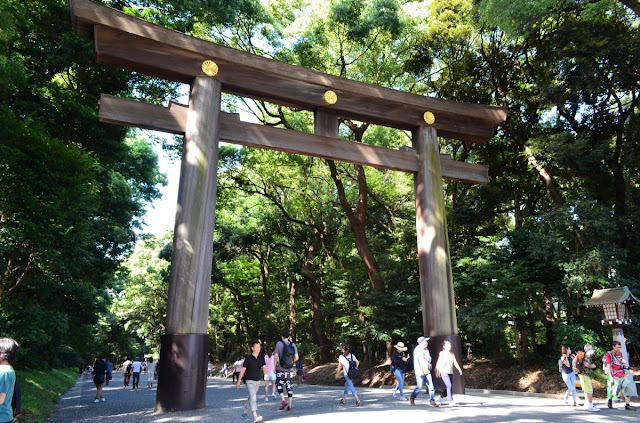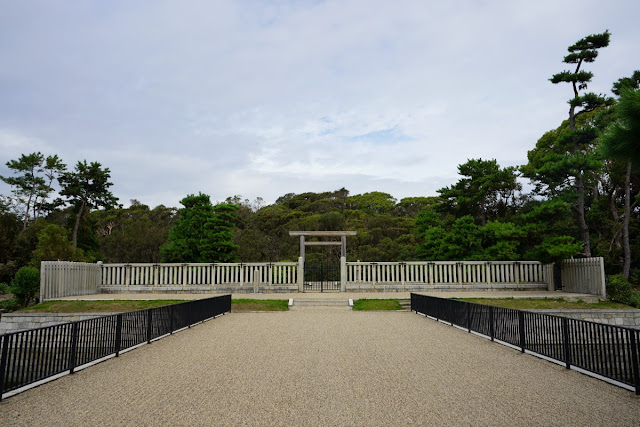Best Areas for Cycling in Japan
Yoyogi Park and around (Tokyo)
Speaking of cycling in Tokyo and Japan with rich nature, Yoyogi Park is Nature, History, Onsen and one of the best spots, which is located right in the center of the city near Shibuya and Harajuku. Everyone from kids to adults can enjoy cycling in and around the park since there are three options of bike for adults, children and tandem at Cycling Center very affordably: 210 yen per hour (Adult), 100 yen per hour (Child), 210 yen per one round (Tandem).
The enormous park Yoyogi Park itself is the best popular park among both domestic and international visitors while it is known as the Central Park in Tokyo. However, it is less known that the park is perfect for cycling. In addition to the quiet and rich nature, various themed festivals are held in the park where plenty of stalls offer food and drinks. The park is also a famous cherry blossom viewing spot in Tokyo during spring.
The most attractive part in the Yoyogi area is Meiji Shrine, the Tokyo’s most popular shrine. It is situated in the site of Yoyogi Park, which is featured by the large torii gate, the majestic main hall and a bunch Sake barrels.
There are cool cafes and shops loved by Tokyo’s hipsters around Yoyogi Park, and Little nap COFFEE STAND, located in the southwest of the park, is highly recommended to drop by for the finest quality coffee. How about taking a break inside the chic shop or taking out a cup of coffee?

Yoyogi Hanchimangu Shrine, one of the most sacred shrines in Tokyo, is also what you should go cycling. It takes only a couple of minutes to get there from the coffee shop by bike. There are several spots to see enclosed by various species of trees in the shrine where people used to live for about 5,000 years ago.
More nice restaurants and shops scatter to the west of the shrine. It is strongly recommended to experience the Japanese traditional culture. Daikokuyu, one of a few public bath facilities in Tokyo, is a nostalgic Onsen spot visited by Tokyoites for a long time. Soaking in the bath after sweating a lot by cycling feels fantastic.
Sawara and Narita (Chiba)
Sawara is History and Tradition place, the small old town located near the Japan’s largest and most used international airport Narita Airport, is a hidden gem for foreign tourists and one of the best areas for cycling in Japan. The good-old Edo’s atmosphere with the traditional canal and historical district has been still well preserved. There are numerous Japanese traditional houses in the town. Tourist Information Center in Sawara lends a bike for 500 yen a day.
The narrow river named Onogawa River also can runs through the town of Sawara and the town has thrived as water transport hub. You can enjoy cycling seeing the serene waterways around the town which were used for transportation during the Edo Period (1603–1867). Hand rowing boat ride service on the Onogawa River is still available for sightseeing, so once take off a bike and sail around the historical town. Toyohashi Bridge (a.k.a. Ja Ja Bridge) over the river is one of the highlights in the town, which provided water to the rice fields before. Now, you can see the interesting view of water falling into the river from the bridge.
Sawara is known for the house which the great person Tadataka Ino lived in. He is a surveyor and cartographer who completed a map of Japan for the first time. You can enter and see his historical house, which was founded in the mid 18th Century, for free. The old town is also famous for its Japanese festival held twice a year in July and October, which is regarded as one of the greatest festivals in Japan. Over 10 festival floats are used in Sawara festival and each of them are about 4 meters high. You can see and take a photo of the big floats at the museum of festival float out of the period.
Don’t forget to cycle to the other historical spot Suwa Shrine that was built in the end of the 16th Century. After passing the giant torii gate, you will face the long staircase with over 120 steps to the main hall of the shrine. The shrine is surrounded by rich nature and offers a nice view at the bottom even if you are too tired to go upstairs.
Sakai (Osaka)
Osaka is History, Tradition, Technology and the most famous and visited city in Western Japan, and the bustling city has numerous spots perfect for cycling. Sakai, Osaka is located in a little south of the central Osaka, and the Mozu area in Sakai offers you a unique cycling experience with ancient history of Japan and a bicycle. It spends only 300 yen to rent a bike a day at the bike port near Mozu Station.
Sakai City and Mozu are famous for their important heritage Mozu Ancient Tomb Cluster including Daisenryo Kofun Ancient Tomb, the gigantic ancient tomb of the 16th Japanese emperor Emperor Nintoku (reign: AD 313–399). A Kofun (ancient tomb), a keyhole-shaped mounded tomb, was made from the late 3rd Century for giving people in authority burial. The Mozu area will be one of the Japan’s hottest tourist spots as the ancient remains have been just listed on UNESCO World Heritage Sites as Mozu-Furuichi Kofun Group: Mounded Tombs of Ancient Japan in this July.
Daisenryo Ancient Tomb is looked on as one of the three largest mounded tombs in the world, together with the Mausoleum of the First Qin Emperor in China and the Great Pyramid of Giza in Egypt. There are about 160,000 ancient tombs all over Japan and about 90 main ones are located in the area in Osaka. You can experience to cycle all the way around the largest mounded ancient tombs only there in the world. It is too large to see the whole tomb while cycling, which is 3 km around it.
Bicycle Museum Cycle Center at the edge of the park is one of the highlights in the Mozu area while the Osaka’s hidden town has no shortage of tourist attractions. Why on earth is the Japan’s only bicycle-themed museum located in such a place? As a matter of fact, a bicycle is closely associated to a Kofun ancient tomb. Sakai City has the largest market share of bicycle in Japan and is called the Town of Bicycle. The enormous ancient tombs were made by massive people with iron-made tools like a hoe.
A large number of craftworkers specialized for iron tools came to that area from across the country and became to live there at that time. The technique has been evolved into various crafts such as a knife, sword, gun and bicycle. That is why Sakai City and the Mozu area in Osaka are the best spot to enjoy cycling while touching the origin of a bike.
Moving to Daisen Park next to Daisenryo Ancient Tomb, you can get to Sakai City Museum to see the whole picture of the gigantic tomb. Is there something like an observatory? No. The museum provides you the chance to enjoy the Daisenryo Ancient Tomb tour with a bird’s eye view in multiple languages with VR technology. There is also a Japanese traditional garden in Daisen Park where you can see the picturesque scenery with greenery and a pond. For a break, how about stopping by nice tea houses before getting out of the park? Two tea houses named Shinan and Oubaian are located in the park, where you can taste Matcha green tea and Japanese-style desserts and experience a quick tea ceremony for only 300 yen.
Itoshima (Fukuoka)
Fukuoka, the largest city in the Kyushu region, has got more popular among foreign travelers lately. Especially, Itoshima, located in the northern west of Fukuoka, is one of the hottest tourist areas and the best deeper destination to enjoy cycling in Japan. A bicycle is perfect not only for the most useful transportation in Itoshima but also for enjoying crisp air in rich nature. Itoshima offers the beautiful beaches, sacred shrine and fresh seafood as well as the breathtaking cycling courses. The theme of cycling in Itoshima is nature, history and gourmet. A rental bike is available for 500 yen for 2 hours.
In the north of Itoshima, there are two natural treasures: the Izumi River and Mt.Koya In June and July, Hamabo (yellow hibiscus) flourish along the Izumi River, which was formed 300 years ago. The face of the river changes by season with seasonal plants. Mt.Kaya, which is also called Mt.Itoshima Fuji, is one of the landmarks of Itoshima. On top of the mountain, Kayasan Shrine is located, from which you can see the panoramic views of the town of Itoshima.
Let’s cycling along the northern coastline to the east to reach the Itoshima’s iconic beach Sakurai Futamigaura Beach. A large white torii gate of Sakurai Shrine stands against the sea and the sky floating on the water. The sacred wedded rocks are situated behind the torii gate. This is also famous for the best sunset viewing spot.
There are more other hidden gems in Itoshima, so a bike is the best option to move around it. It takes just an hour to get there from Hakata, the center of Fukuoka!
Itoshima has the largest basalt cave in Japan named Keya Cave at the northernmost of the area. You can get to the cave by cruise and wander into the cave under the good condition of the sea. The 90 meters long cave is formed in the 64 meters high cliff, and the natural art can be seen inside the cave. An observatory is set on the cliff which is accessible from Kuroiso Beach. This spot is also recommended for fans of Studio Ghibli since on the way to the observatory, there is the mysterious tunnel formed by trees, which is called the Totoro’s forest by the local


















0 Comments